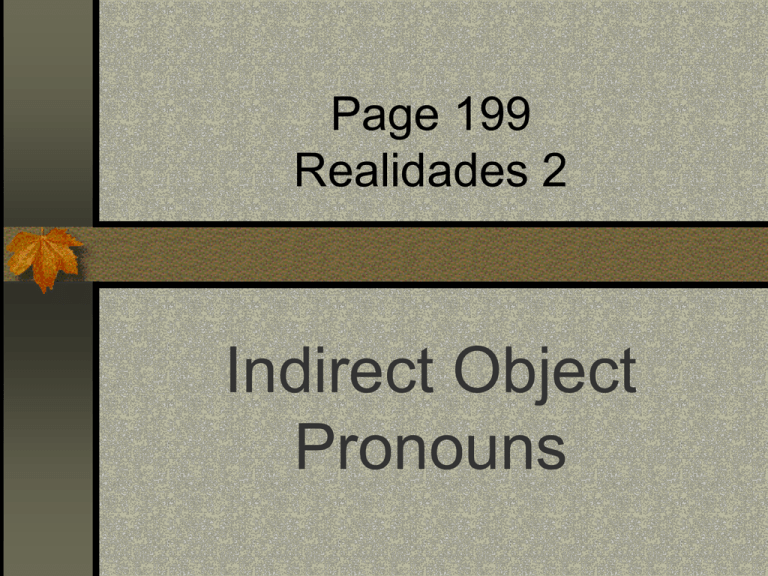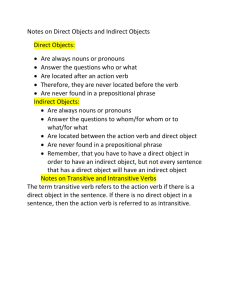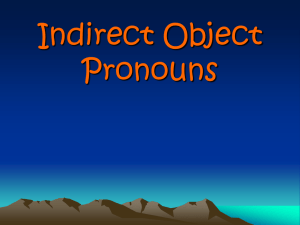Indirect Object Pronouns Page 199 Realidades 2
advertisement

Page 199 Realidades 2 Indirect Object Pronouns Indirect Objects I bought that skirt for her. I gave those shoes to him. What is the subject, the verb, the direct object and the indirect object? Indirect Objects I bought that skirt for her. verb subject direct indirect object object Indirect Objects I gave those shoes to him. verb subject direct indirect object object Indirect Object Pronouns Indirect object pronouns tell to whom the action is being done. Indirect Object Pronouns They mean the same thing in English as do the direct object pronouns, only they add the words “to or for”. For example, “to you, for me, ect.” Indirect Object Pronouns (English) (to or for) me (to or for) us (to or for) you (to or for) him, (to or for) her, it them Indirect Object Pronouns (Spanish) me (to or for me) nos (to or for us) te le (to or for you) os (to or for you all) (to or for him, les (to or for them, you all) her, it) Placement of Indirect Object Pronouns Indirect Object Pronouns, me, te, le, nos, os, and les are placed either before a conjugated verb or attached to the end of an infinitive. Before the Conjugated Verb: Le va a dar el libro a Elena? Nos vio hace cinco días a nosotros. Before the Conjugated Verb A él, le gustan los libros? Sí, le interesan mucho. Before the verb or after the infinitive: Before the verb: Le vas a dar el libro a Elena? Sí, le voy a dar el libro a Elena. After the infinitive: Vas a darle el libro a Elena? Sí, voy a darle el libro a Elena. Indirect Object Pronouns These are the “me, te, le, nos and les that you see before “gustar, interesar, faltar, fascinar, etc.” For example: Indirect Object Pronouns A ella le gustan las faldas? Sí, le fascinan! A ellos les encanta la comida? Sí, les encanta! Indirect Object Pronouns Sometimes we use a + a pronoun or a person’s name for emphasis or to make it clear who we are referring to. Indirect Object Pronouns Me duelen los pies. Y a ti, qué te duele? A Pablo le duelen los pies. A Ud. le duelen los pies, no?





